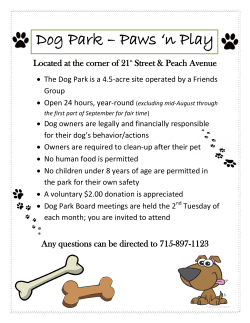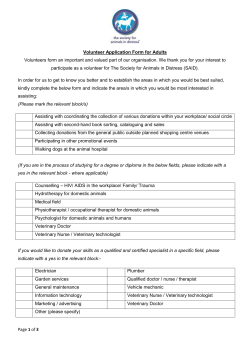
Doctor Phil - Vet Corner
VETERINARY CORNER By Phil Kress, DVM Last week I was called by Dr. Bret Smith, one of the veterinarians I sold my practice to. He presented an interesting scenario involving one of our old, favorite clients. They had purchased a lovable schnauzer pup 8 months ago that unfortunately barked often at the slightest provocation. When its high-pitched bark echoed through the house it triggered a migraine headache, suffered at least a day by the husband. He finally declared that the dog had to be either adopted out, put to sleep, or be de-barked. Over the years it has become an ethical question as to whether a ventriculochordectomy, the removal of the vocal chords, is humane or safe. Therefore, many veterinary teaching hospitals and private practices have stopped doing the procedure. I’ve observed that I preserved more neighborly relations, saved more marriages, and importantly saved more dog’s lives by offering the service. In this particular case I agreed to help Dr. Smith by “gloving in” with him to assist and train him to do the surgery. It involves surgically opening the larynx (the voice box or “adam’s apple” on us), exposing the vocal folds, and removing them. A padded bandage is applied over the area, mild pain relief administered, and in two weeks stitches removed. The dog exhibits a silent bark, or at most a “whisper bark” afterward. Seldom have I had to follow-up with a second surgery to remove scarred tissue folds that healed back forming a pseudo-vocal chord. Dr. Phil & Stella Most of the dogs presented over the years for this procedure have been small, highpitched barkers. On the other hand, I performed surgery on many large breeds that were loud, incessant barkers that drove everyone crazy! If you’re ever presented with the problem and at the end of your rope, think about the option of surgery. Hope your spring is going well.
© Copyright 2025





















